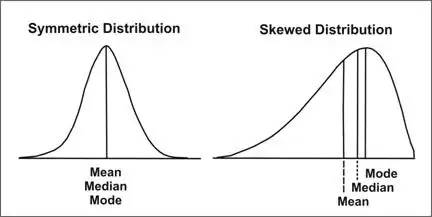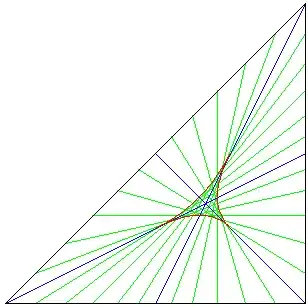After cutting a scotch egg into two to share, a friend and I wondered, "How many different ingredients can a solid mixture have, such that there exists a plane that splits the mixture into two halves, each having the same amount of each ingredient?"
I thought the answer was three. For example, a scotch egg has three ingredients: egg white, yolk and stuffing. Each ingredient has a centre of mass, and there is at least one plane that passes through any three arbitrary points.
He later pointed out that the centre of mass does not necessarily divide a distribution into two. Looking at the one-dimensional case,
I should have used the median instead of the mean. Is there an equivalent "median of mass"?

